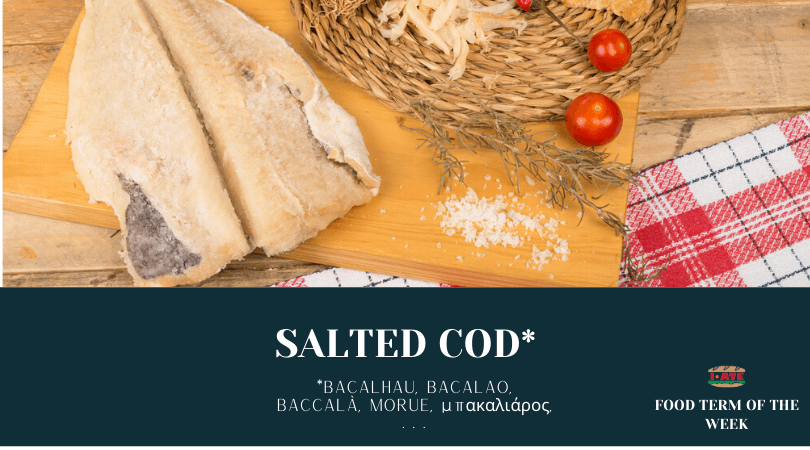 It is all the rage to talk about terminology and salted cod.
It is all the rage to talk about terminology and salted cod.
Salted cod goes by many names around Europe: in Portugal it is called bacalhau, in Spain bacalao, in France morue and so on. Of course, the fish is the same and so is the process of drying and salting.
But what is the difference between salted cod, fresh cod and stockfish? These terms are often confused.
First of all, we have to pay attention to the kind of fish, as the name changes according to the process of conservation: it is either the gadus morhua or Atlantic cod. Here we face the first problem: are we sure what kind of fish is used in our own country? In Greece for example the name bakaliaros (μπακαλιάρος) refers to cod but also to another fresh fish, the Merluccius merluccius. In Italy merluzzo refers to salted cod, as does cabillaud in France, but if we use the word merluza in Spain it is not a cod but a Merluccius. Are you lost? Me too.
Let’s have a look at the table:
| EN | cod | salted cod | stockfish |
| FR | cabillaud | morue | morue séchée |
| ES | bacalao fresco | bacalao salado | bacalao seco |
| GR | μπακαλιάρος | μπακαλιάρος παστός | μπακαλιάρος |
| IT | merluzzo | baccalà | stoccafisso/baccalà |
| PT | bacalhau fresco | bacalhau salgado | bacalhau seco |
We can see that some languages name the same fish differently according to the process of conservation: if it is fresh, salted and dried or only dried. Others do not differentiate, or further still, use the wrong common name of the fresh fish.
Another linguistic confusion exists in the difference between salted cod and stockfish. As we already mentioned, if it is salt cured, it is known as baccalà, while when it is air cured, it is referred to as stoccafisso in Italian. But, for example, one of the most famous Italian recipes including the name of salted cod, the Baccalà alla Vicentina (slowly braised with onions, anchovies and milk), is traditionally done with stockfish and not using salted cod!

This linguistic richness reflects the widespread use of salted cod and stockfish across Europe.
Salted cod is such a well-known product in Mediterranean, particularly Catholic, countries that it is hard to remember that most of the cod is imported from the North Atlantic. Since the late eighteenth century, Iceland and Norway have based their fisheries on exports to distant markets. The Atlantic cod was by far the most valuable species caught in both countries and was mainly exported dried to Southern Europe. But why is this fish imported mostly to Catholic countries? According to Grigson, “in the past, the strict dictates of the Catholic faith brought a demand for a regular supply of fish on weekly fast-days – not only Fridays, but often several other days. It was all very well to rely on fresh fish if you lived on the coast, or had access to a teeming river. But what if you did not? No refrigeration, bad roads, snail-slow transport… The salt fish was the answer. Salt cod was a cheap form of protein in the past”.
This terminological insight helps us to understand how different countries receive and elaborate the same concept and mainly to understand what we eat!

Go to I·ATE
Written by Francesca Bisiani
Terminology trainee at TermCoord
References
Oddy, D., Drouard, A. (2013). The food industries of Europe in the Nineteenth and Twentieth Centuries. Routledge
Images
https://upload.wikimedia.org/wikipedia/commons/2/25/Saltfiskur.jpg
https://upload.wikimedia.org/wikipedia/commons/3/32/Morue_75_livres_ile_Bonaventure_vers_1930.jpg

